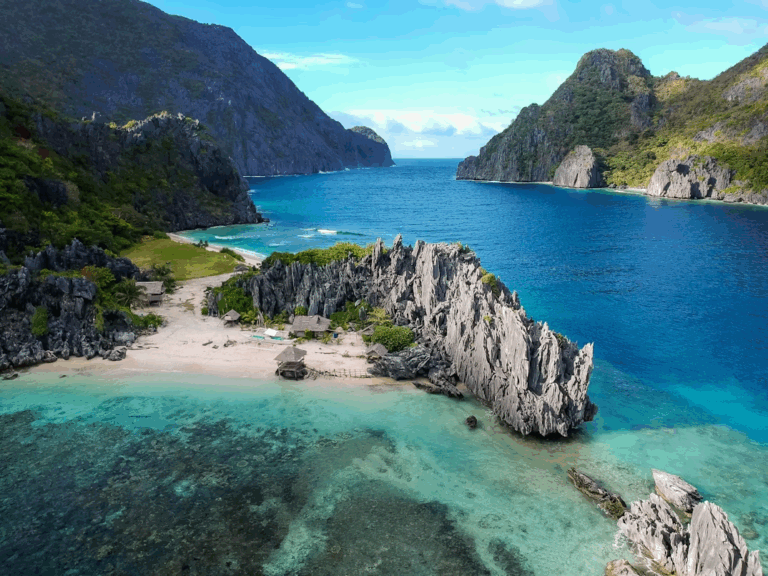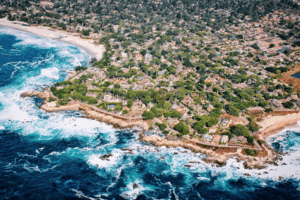Europe’s Current Travel Landscape
Europe has long been a top destination for travelers worldwide, offering an unparalleled blend of history, culture, cuisine, and natural beauty. But with changing global conditions, many prospective visitors are asking the important question: Is it safe to travel to Europe right now? The good news is that as of 2025, Europe remains one of the safest regions for international travelers, though with some important considerations and variations between countries.
This comprehensive guide examines the current safety situation across Europe, providing you with the latest information on security concerns, health considerations, natural disaster risks, and practical safety tips. We’ll also highlight the safest and most rewarding destinations for your 2025 European adventure, ensuring you can explore this magnificent continent with confidence and peace of mind.
Key Takeaways:
- Most European countries currently maintain high safety ratings for travelers
- Country-specific considerations vary significantly across the continent
- Health infrastructure across Europe remains world-class with excellent access to medical care
- Smart safety precautions can significantly enhance your travel security
- Several European destinations stand out as particularly safe for 2025 travel
Current Safety Overview for European Travel
General Safety Situation
The overall safety situation in Europe in 2025 remains stable and positive for travelers. The Global Peace Index continues to rank multiple European nations among the world’s safest countries, with Iceland, Portugal, Austria, Denmark, and Ireland frequently appearing in top positions. Most visitors to Europe experience trouble-free travel, with violent crime rates against tourists remaining exceptionally low compared to many other regions.
However, Europe is not a monolith, and safety conditions vary considerably between countries and even between different urban centers within the same country. Urban areas generally present the same types of risks found in major cities worldwide, primarily:
- Petty theft and pickpocketing in tourist areas
- Occasional scams targeting visitors
- Isolated incidents of harassment or minor property crime
Current Security Concerns
Current security considerations for European travel in 2025 include:
Terrorism Risk: Following years of enhanced security measures, the frequency of terrorist incidents has significantly decreased across Europe. Major tourist destinations have implemented extensive security protocols at transportation hubs, landmarks, and public gathering spaces. While the threat has diminished, security experts still recommend basic vigilance in crowded areas.
Political Demonstrations: Certain European cities continue to experience periodic political demonstrations or strikes that may temporarily disrupt transportation or access to attractions. These events are typically announced in advance and rarely pose direct risks to travelers, though they may cause inconvenience.
Regional Conflicts: The eastern periphery of Europe continues to experience isolated tensions. Countries bordering active conflict zones maintain heightened security measures. Areas with travel advisories are clearly identified by international governments, and most popular tourist destinations remain far removed from these regions.
Country-Specific Safety Profiles
Safety profiles vary significantly across European nations:
Western Europe (France, Germany, UK, Benelux countries) maintains excellent overall safety records with robust police presence in tourist areas. Paris, London, and Amsterdam have strengthened security around major attractions.
Northern Europe (Scandinavia, Finland, Iceland) continues to rank among the world’s safest regions with extremely low violent crime rates, though costs for travelers remain high.
Southern Europe (Italy, Spain, Portugal, Greece) offers generally safe environments for tourists, though with higher rates of petty theft in some urban centers and tourist hotspots.
Central Europe (Austria, Switzerland, Czech Republic, Poland) presents strong safety credentials with well-developed tourist infrastructure and low crime rates.
Eastern Europe shows the greatest variation in safety profiles, with some destinations offering excellent security (Slovenia, Croatia, Baltic States) while others may require additional precautions.
Health and Medical Considerations
Current Health Situation
The public health landscape across Europe in 2025 has largely stabilized following the challenges of previous years. The European Centre for Disease Prevention and Control (ECDC) reports that infectious disease rates remain low across the continent, with robust public health systems effectively monitoring and managing any localized outbreaks.
Key health considerations for travelers include:
Healthcare Access: European countries universally offer high-quality medical care, though access systems vary by nation. Visitors from outside the EU should secure comprehensive travel health insurance before departure, as medical costs can be substantial without coverage.
Vaccination Requirements: While standard travel vaccinations are recommended, Europe currently has no widespread mandatory vaccination requirements for entry. However, specific requirements may apply for travelers arriving from certain regions or during seasonal health concerns.
Water and Food Safety: Water is generally safe to drink throughout Western and Northern Europe. Southern and parts of Eastern Europe may occasionally recommend bottled water in certain regions, though major tourist destinations typically offer safe tap water.
Managing Specific Health Risks
Several specific health considerations merit attention for 2025 travelers:
Seasonal Illness Concerns: European destinations continue to experience seasonal fluctuations in respiratory illnesses. Urban centers may implement temporary health measures during peak transmission periods. Maintaining basic hygiene practices and following local health guidelines is advised.
Heat-Related Concerns: Southern European countries increasingly experience intense summer heat waves, which can pose risks especially to elderly travelers or those with underlying health conditions. Mediterranean destinations in July and August regularly record temperatures exceeding 40°C (104°F), necessitating proper hydration and sun protection.
Air Quality: Major European cities occasionally experience reduced air quality, particularly during summer months or weather conditions that trap pollutants. Paris, Madrid, and several Eastern European cities may issue air quality advisories, which travelers with respiratory conditions should monitor.
Tick-Borne Diseases: Outdoor activities in forested regions of Central and Eastern Europe present a risk of tick-borne encephalitis and Lyme disease. Appropriate clothing and insect repellent are recommended for hiking or rural activities.
Environmental and Natural Disaster Risks
Climate-Related Considerations
Climate change has altered certain environmental risks across Europe:
Flooding: River flooding along major waterways (Rhine, Danube, Seine) has become more common, particularly during spring months. Cities including Venice, Amsterdam, and parts of Central Europe may experience occasional flooding events.
Wildfires: Mediterranean regions face increased wildfire risk during summer months, particularly in Portugal, Spain, southern France, Greece, and parts of Italy. Rural and woodland areas may implement access restrictions during high-risk periods.
Alpine Hazards: Mountain regions experience shifting risk profiles for avalanches and rockslides as weather patterns change. Travelers engaging in mountain activities should check current conditions and follow local guidance.
Region-Specific Environmental Concerns
Different European regions face varying environmental considerations:
Mediterranean Coast: Extreme heat events and water shortages may affect southern European destinations during peak summer, with occasional restrictions on water usage.
Alpine Regions: Changing snow patterns affect winter sports destinations, though major resorts have invested in adaptation measures. Summer hiking now faces more variable conditions with potential for sudden weather changes.
Northern Europe: Generally faces fewer acute environmental hazards, though coastal areas may experience more frequent storm events.
Practical Safety Tips for European Travel
Essential Safety Precautions
Regardless of your specific European destination, these fundamental safety practices significantly enhance travel security:
Document Security:
- Keep digital copies of all important documents (passport, insurance, tickets)
- Use hotel safes for passport storage when possible
- Carry only necessary identification when exploring
Financial Safety:
- Use a combination of payment methods (credit card, cash, mobile payments)
- Inform your bank of travel plans to prevent card blocks
- Carry limited cash and use ATMs inside banks when possible
- Consider money belts or hidden pouches in high-risk areas
Transportation Safety:
- Use only licensed taxis or verified rideshare services
- Research local transportation options before arrival
- Be particularly vigilant at transportation hubs
- For driving, understand local traffic laws and parking regulations
Digital and Information Security
Modern travel requires attention to digital safety:
Connectivity Considerations:
- Use VPNs when connecting to public WiFi networks
- Consider a local SIM card or eSIM for reliable communications
- Enable two-factor authentication on important accounts
Information Management:
- Research common local scams before arrival
- Register with your country’s travel advisory service
- Follow local news sources during your stay
- Subscribe to safety alerts from your country’s embassy
Cultural Awareness and Local Integration
Understanding local customs enhances both safety and travel experience:
Cultural Sensitivity:
- Research basic cultural norms and taboos before arrival
- Learn a few key phrases in the local language
- Dress appropriately for local standards and contexts
- Respect religious sites and customs
Local Integration:
- Avoid displaying obvious signs of tourism when possible
- Seek recommendations from locals rather than following only tourist routes
- Consider guided tours for unfamiliar areas
- Trust local advice regarding neighborhood safety
Top 10 Safest European Destinations for 2025
Based on current safety data, infrastructure quality, healthcare access, and traveler experiences, these destinations stand out as particularly safe choices for 2025:
1. Reykjavik, Iceland
Iceland maintains its position as Europe’s safest country with virtually no violent crime. The capital offers:
- Exceptional urban safety even at night
- Transparent and tourist-friendly services
- Excellent healthcare facilities
- Natural hazards are the main concern, with well-developed warning systems
Best for: Northern lights viewing, geological wonders, and outdoor adventures.
2. Bern, Switzerland
Switzerland’s capital exemplifies the country’s legendary safety and efficiency:
- Impeccable public transportation system
- Extremely low crime rates
- Clean, orderly urban environment
- Excellent multilingual emergency services
Best for: Cultural experiences, Alpine proximity, and Swiss precision.
3. Ljubljana, Slovenia
This Central European gem offers outstanding safety credentials:
- One of Europe’s greenest capitals
- Pedestrian-friendly city center
- Very low crime rate and friendly locals
- Excellent value compared to Western European destinations
Best for: Charming old town exploration, nearby natural attractions, and culinary experiences.
4. Copenhagen, Denmark
Consistently ranking among the world’s safest and happiest cities:
- Exceptional cycling infrastructure
- Very low crime rates and high social trust
- Excellent public services and healthcare
- World-class urban planning and safety design
Best for: Design appreciation, culinary exploration, and Scandinavian culture.
5. Porto, Portugal
Portugal’s safety reputation continues to draw visitors to this coastal city:
- Lower tourist density than Lisbon
- Friendly local population
- Excellent food safety standards
- Good value for Western Europe
Best for: Wine tourism, historical architecture, and Atlantic coastal experiences.
6. Vienna, Austria
The Austrian capital maintains excellent safety standards:
- Superb public transportation coverage
- Well-lit public areas
- Excellent emergency services
- High standards of cleanliness and order
Best for: Classical music, coffee house culture, and imperial history.
7. Helsinki, Finland
Finland’s capital offers exceptional urban safety:
- High social trust and very low crime
- Excellent public services
- Good English proficiency among locals
- Well-designed urban spaces
Best for: Design experiences, sauna culture, and archipelago exploration.
8. Edinburgh, Scotland
Scotland’s capital combines safety with rich cultural offerings:
- Well-monitored historic center
- Friendly local population
- Excellent public transportation
- Good healthcare access
Best for: Historical exploration, festival experiences, and literary connections.
9. Bruges, Belgium
This medieval gem offers a secure environment for visitors:
- Pedestrian-friendly historic center
- Low crime rates
- Excellent preservation and maintenance
- Good emergency services
Best for: Medieval architecture, chocolate tasting, and canal cruises.
10. Tallinn, Estonia
Estonia’s digital leadership enhances traveler safety in its capital:
- Advanced e-services for visitors
- Well-preserved medieval center
- Strong digital infrastructure
- Growing tourism infrastructure with safety emphasis
Best for: Digital nomads, medieval history, and Baltic culture.
Special Considerations for Different Traveler Types
Family Travel Safety
Families traveling to Europe benefit from the continent’s generally child-friendly atmosphere:
Family-Specific Safety Tips:
- Research family-friendly accommodations with appropriate safety features
- Consider destinations with lower traffic and good pedestrian infrastructure
- Prepare children with basic safety information and meeting points
- Take advantage of Europe’s excellent children’s facilities in museums and attractions
Top Family-Safe Destinations:
- Copenhagen, Denmark (Tivoli Gardens, child-friendly museums)
- Munich, Germany (English Garden, Deutsches Museum)
- Stockholm, Sweden (Skansen, Junibacken)
Solo Traveler Considerations
Solo travelers can explore Europe safely with these considerations:
Solo Safety Strategies:
- Choose accommodations in well-reviewed, central locations
- Establish regular check-ins with someone at home
- Consider group tours for certain activities or regions
- Trust your instincts regarding uncomfortable situations
Recommended Solo Destinations:
- Dublin, Ireland (friendly locals, good English proficiency)
- Prague, Czech Republic (excellent public transportation)
- Copenhagen, Denmark (high safety for solo women travelers)
Senior Traveler Safety
Older travelers will find Europe generally accommodating:
Senior-Specific Considerations:
- Research accessibility features of destinations and accommodations
- Consider medical evacuation insurance
- Plan itineraries with appropriate pacing and rest days
- Research healthcare facilities with English-speaking staff
Senior-Friendly Destinations:
- Lisbon, Portugal (despite hills, good services and pace)
- Vienna, Austria (excellent classical culture and accessibility)
- Bath, England (compact historic center with health tradition)
LGBTQ+ Traveler Safety
Europe offers varying degrees of LGBTQ+ acceptance:
Safety Considerations:
- Research specific country attitudes and legal protections
- Western and Northern Europe generally offer the strongest legal protections
- Exercise discretion in more conservative regions
Most Welcoming Destinations:
- Copenhagen, Denmark
- Amsterdam, Netherlands
- Berlin, Germany
- Madrid, Spain
Navigating Transportation Safety
Air Travel Considerations
European air travel maintains excellent safety records:
Airport Safety:
- Major European airports have enhanced security protocols
- Allow extra time at major hubs like Heathrow, Charles de Gaulle, and Frankfurt
- Be aware of occasional strikes affecting specific carriers or airports
Airline Considerations:
- European carriers maintain high safety standards
- Budget airlines are generally safe but may use secondary airports
- Understand baggage allowances which are often stricter than other regions
Rail Safety in Europe
Europe’s extensive rail network offers safe, efficient transportation:
General Rail Safety:
- Major stations have increased security presence
- High-speed trains (TGV, Eurostar, ICE) have security screening
- Night trains require additional attention to belongings
Regional Variations:
- Western European rail systems typically offer the highest reliability
- Eastern European services are improving rapidly but may have older infrastructure
- Advance reservations are recommended for major routes
Road Safety Factors
For those driving in Europe:
Driving Considerations:
- Understand local driving regulations before arrival
- Be aware of congestion charges in cities like London and Stockholm
- Learn roundabout right-of-way rules, particularly in the UK and Ireland
- Winter driving in Alpine regions requires special preparation
Country-Specific Factors:
- Northern European countries generally have the safest roads
- Southern European driving styles may be more aggressive
- Rural roads may lack maintenance in certain regions
Emergency Preparedness
Understanding Emergency Services
European emergency services are generally excellent but vary by country:
Emergency Numbers:
- 112 works throughout Europe for emergency services
- Many tourist areas have dedicated tourist police with language capabilities
- Save local embassy contacts before traveling
Medical Emergencies:
- European hospitals provide high-quality care
- Language assistance is increasingly available
- Keep insurance information readily accessible
Creating a Personal Emergency Plan
Before traveling to Europe, prepare a basic emergency plan:
Key Elements:
- Share itinerary with trusted contacts
- Establish communication protocols and check-in times
- Research emergency phrases in local languages
- Identify meeting points in major destinations you’ll visit
Documentation Preparation:
- Carry medical information (blood type, allergies, conditions)
- Have emergency contacts visible on phone lock screen
- Consider medical ID bracelet for specific conditions
Travel Insurance Essentials
Understanding Coverage Needs
Travel insurance is essential for European travel:
Critical Coverage Elements:
- Medical coverage with sufficient limits (minimum €30,000 recommended)
- Repatriation coverage
- Trip cancellation/interruption protection
- Coverage for high-value items if applicable
Special Considerations:
- Adventure activities may require supplemental coverage
- Pre-existing conditions need specific provisions
- Pandemic-related disruptions require careful policy review
Selecting the Right Policy
Not all travel insurance is created equal:
Evaluation Factors:
- Coverage limits for medical expenses
- Deductible amounts and claim processes
- Exclusions and limitations
- Customer service availability and language support
Recommended Approach:
- Compare multiple policies before purchasing
- Read reviews of claim experiences
- Consider annual policies for frequent travelers
- Verify coverage in all countries on your itinerary
Seasonal Safety Considerations
Summer Travel Safety (June-August)
Summer brings specific considerations:
Weather-Related Concerns:
- Extreme heat in Southern Europe (hydration, sun protection essential)
- Occasional severe storms in Central Europe
- Crowded conditions at major attractions and beaches
Practical Tips:
- Book accommodations with air conditioning in Southern Europe
- Visit popular sites early morning or evening
- Stay alert in crowded summer festivals and events
Winter Travel Considerations (December-February)
Winter travel presents different challenges:
Weather Factors:
- Snow and ice in Northern and Central Europe
- Limited daylight hours in Northern countries
- Potential for transportation disruptions
Preparation Recommendations:
- Pack appropriate cold-weather gear
- Allow schedule flexibility for weather delays
- Consider travel insurance with weather coverage
- Research indoor alternatives for key activities
Shoulder Season Advantages (April-May, September-October)
Many safety experts recommend shoulder seasons:
Safety Benefits:
- Reduced crowds at major attractions
- More comfortable temperatures
- Often better value and service
- Lower stress on local infrastructure
Best Shoulder Season Destinations:
- Mediterranean coastal areas (pleasant temperatures)
- Major cities (fewer tourist crowds)
- Wine regions (harvest activities in fall)
Digital Tools for Safe European Travel
Essential Safety Apps
Technology enhances travel safety:
Recommended Safety Applications:
- GeoSure (neighborhood safety ratings)
- TripWhistle (global emergency numbers)
- Smart Traveler (government travel advisories)
- What3words (precise location sharing)
Translation and Communication:
- Google Translate (offline language packs)
- Duolingo (basic language preparation)
- WhatsApp (widely used throughout Europe)
Real-Time Information Sources
Stay informed during your travels:
Official Channels:
- Local embassy social media accounts
- European transport operator websites and apps
- Official tourism board alerts
Community Resources:
- Expatriate forums for current local information
- Specialized travel groups for specific destinations
- Local news sources (with translation)
Common Scams and How to Avoid Them
Recognizing Tourist-Targeted Scams
Europe has specific scam patterns travelers should recognize:
High-Risk Situations:
- “Found ring” or “friendship bracelet” approaches
- Petition signers seeking donations
- Forced “services” like unwanted tours or directions
- Restaurant menu tricks and tourist pricing
Transportation Scams:
- Unlicensed taxis with rigged meters
- “Helpful” locals at train ticket machines
- Overcharging for short rides
Prevention Strategies
Avoid becoming a target with these approaches:
General Prevention:
- Project confidence and purpose when moving about
- Decline unsolicited help with luggage or directions
- Verify prices and details before agreeing to services
- Research common local scams before arrival
Financial Protection:
- Use credit cards with fraud protection when possible
- Keep small denominations accessible for minor purchases
- Verify ATMs are bank-affiliated before using
Cultural Integration for Enhanced Safety
Understanding Local Customs
Cultural awareness contributes to safety:
Safety Through Integration:
- Learn basic greetings and thank you in local languages
- Understand appropriate dress for different contexts
- Research tipping customs to avoid awkward situations
- Respect local pace of life and business hours
Regional Variations:
- Northern Europe generally values personal space and quieter interactions
- Southern Europe often features more animated communication and closer personal distances
- Eastern Europe may maintain more formal interaction styles
Local Etiquette Essentials
Certain behaviors mark visitors as easy targets:
Blending In Tips:
- Observe local eating times (later dinners in Spain and Italy)
- Understand public transportation etiquette
- Respect local volume levels in public spaces
- Follow photography rules at sensitive sites
Context-Specific Guidance:
- Religious sites require modest dress throughout Europe
- Business interactions follow more formal protocols than in North America
- Meal times and structures vary significantly by country
FAQ: European Travel Safety 2025
General Safety Questions:
Is Europe safe for Americans to visit in 2025?
Yes, Europe remains generally very safe for American visitors. Most European countries have excellent safety records, good infrastructure, and are accustomed to international tourists. Americans should register with the Smart Traveler Enrollment Program (STEP) before traveling and follow basic safety precautions.
Which European countries should I avoid in 2025?
Most European countries welcome tourists safely in 2025. However, travelers should check current travel advisories for countries bordering active conflict zones and follow government recommendations. Areas with Level 3 or 4 travel advisories should be approached with caution or potentially postponed.
Is it safe to travel to Europe alone?
Solo travel throughout most of Europe is generally safe with proper preparation. Northern and Western European destinations are particularly well-suited for solo travelers, with excellent public transportation, good English proficiency, and strong safety records. Solo travelers should maintain awareness in tourist areas and follow standard safety practices.
Practical Security Concerns
How concerned should I be about terrorism in Europe?
While the terrorism risk can never be eliminated entirely, the frequency of incidents has decreased significantly in recent years. Major European cities have implemented extensive security measures at popular tourist sites, transportation hubs, and public gatherings. Maintain normal vigilance, but terrorism shouldn’t deter European travel plans.
Is pickpocketing still a major problem in European cities?
Petty theft remains the most common crime affecting tourists in certain European destinations. Cities like Barcelona, Paris, Rome, and Prague have known hotspots for pickpocketing, particularly around major attractions and on public transportation. Using anti-theft bags, keeping valuables secure, and maintaining awareness significantly reduces this risk.
How safe is public transportation in Europe?
Public transportation across Europe is generally very safe and represents the most efficient way to navigate most cities. Major systems in cities like London, Paris, and Berlin have extensive security measures. Evening awareness is recommended on some systems, but violent incidents remain rare.
Health and Medical Questions
Do I need special vaccinations for Europe?
For most travelers, no special vaccinations are required for European travel beyond routine immunizations. However, tick-borne encephalitis vaccination might be recommended for extensive outdoor activities in forested areas of Central and Eastern Europe. Always check with a travel medicine specialist before departure.
Is tap water safe to drink across Europe?
Tap water is safe to drink in most Western and Northern European countries. Some parts of Southern and Eastern Europe may have varying water quality, though major tourist destinations typically provide safe drinking water. When uncertain, bottled water is widely available.
What happens if I get sick while traveling in Europe?
Europe offers excellent healthcare, though systems vary by country. EU citizens can use the European Health Insurance Card (EHIC) across member states. Non-EU visitors should have comprehensive travel health insurance. Many tourist areas have clinics with English-speaking staff, and pharmacists throughout Europe are knowledgeable resources for minor ailments.
Making the Most of Safe European Travel

Europe in 2025 continues to offer some of the world’s safest and most rewarding travel experiences. While no destination can guarantee perfect safety, the combination of strong infrastructure, excellent healthcare systems, and well-developed tourism services makes Europe an excellent choice for travelers of all types.
The key to safe European travel lies in preparation, awareness, and cultural respect. By researching your specific destinations, understanding local customs, and following basic safety practices, you can minimize risks and focus on the extraordinary experiences that make Europe a perennial favorite for travelers worldwide.
As you plan your European adventure, remember that the safest travels often result from balanced preparation – neither excessive worry nor careless confidence. Pack your common sense alongside your passport, remain observant without being paranoid, and embrace the wonderful diversity of cultures, landscapes, and experiences that make Europe an enduring destination for travelers seeking both adventure and security.
Ready to start planning your safe European journey? Consider beginning with one of our top-rated destinations for 2025, and build an itinerary that balances famous highlights with off-the-beaten-path discoveries. Wherever your European travels take you, the preparation you’ve gained from this guide will help ensure a safe, memorable, and enriching experience.







